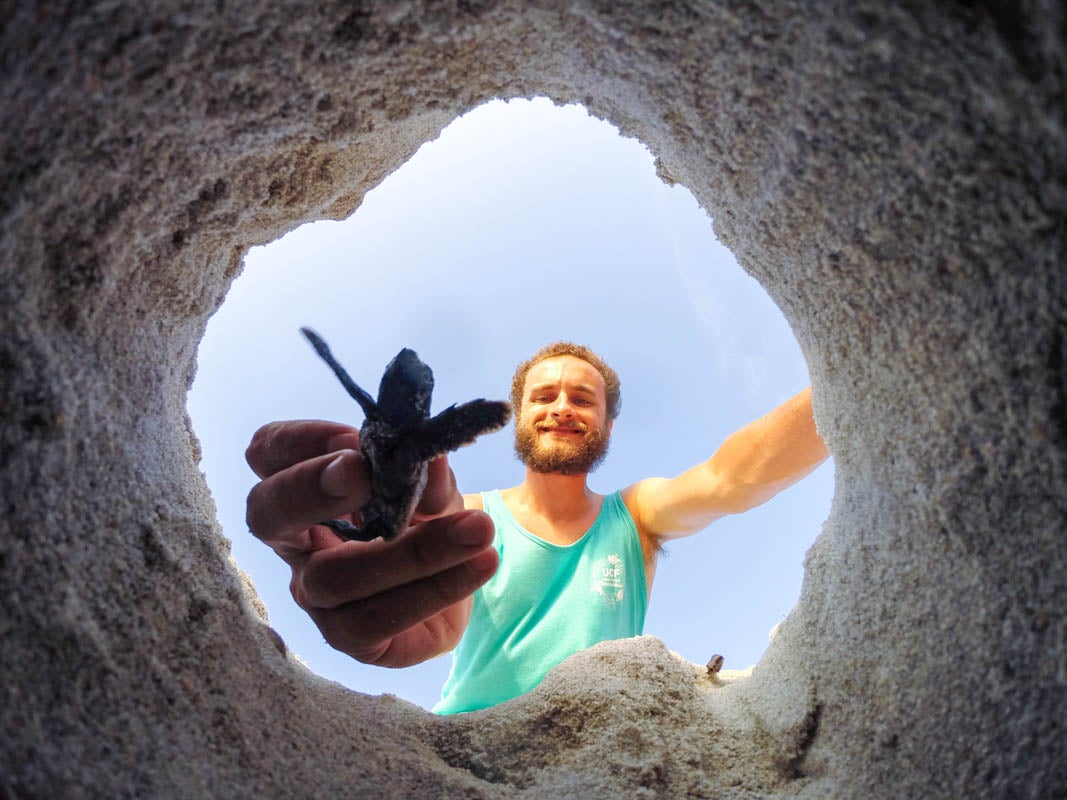UCF Knights conduct research around the globe to help understand and conserve wildlife. To celebrate World Wildlife Day, launched on March 3 by the United Nations in 1973 to help raise awareness about how people benefit from “fauna and flora,” we asked our Knights and our faculty to share some pictures from their field work.
The photos shared are a small sampling of the kind of work being done by our graduate and undergraduate students and our faculty and research scientists. They include everything from tracking invasive species that have crept into Florida’s coastlines and sea turtle monitoring through our UCF Marine Turtle Research Group to efforts to restore oyster reefs which clean waterway and looking for ways to preserve endangered species.
In the past we’ve had students and faculty investigate the Key West deer, black bears, grasshopper sparrow and more, the impact of roadkill on vulnerable population of wildlife and even giraffe poop to better understand their dietary needs to help conserve the species in captivity or in wildlife preserves in Africa.
As Henry David Thoreau wrote, “In wildness is the preservation of the world.”
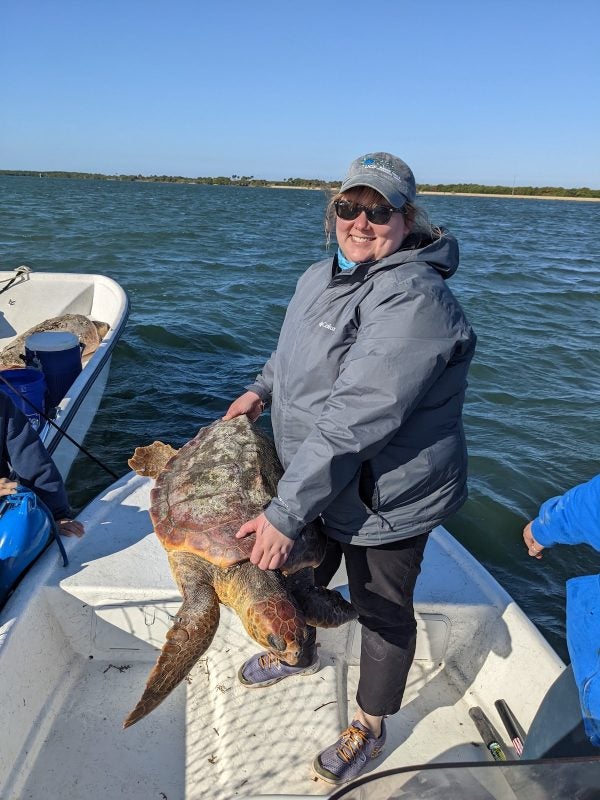
Biology doctoral candidate Katie Martin collects data on juvenile sea turtles in the Indian River Lagoon on the east coast of Florida.
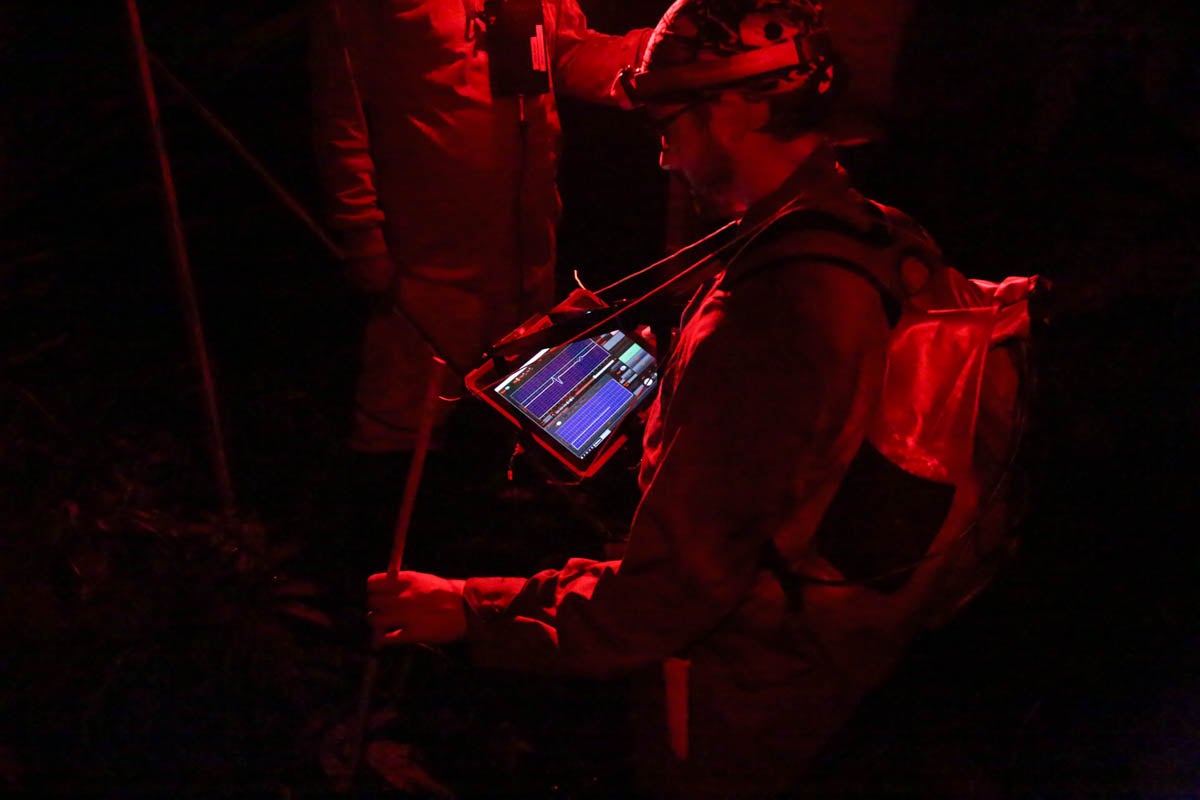
Biology alum Joe Waddell ’17PhD uses custom software developed by the Crampton Lab to record electric fish at night in a small Amazon rainforest stream in Peru. (Photo by Jeffrey Lambert)
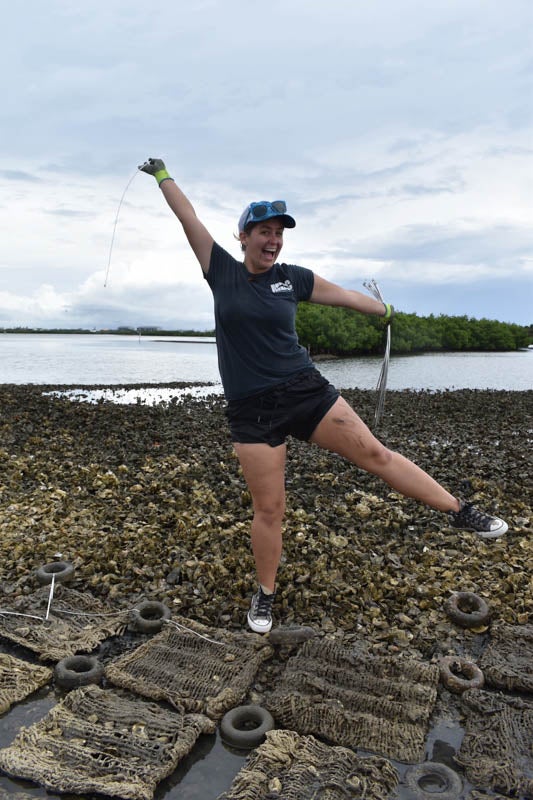
Jessy Wayles ’15 assists with oyster reef restoration using biodegradable materials in the Mosquito Lagoon on the east coast of Florida. Wayles is now the director of conservation at Marine Discovery Center in New Smyrna Beach, Florida and a UCF primary restoration partner.
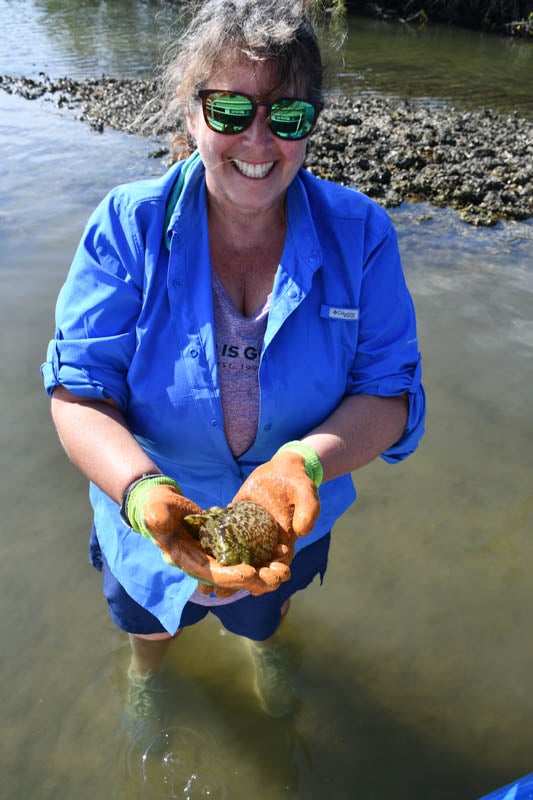
Pegasus Professor of Biology Linda Walters holds a large sooty sea hare, Aplasia brasiliana, found while monitoring oyster reef restoration success in Mosquito Lagoon on the east coast of Florida. While this species used to be common in these waters, this was the first individual Walters and researchers in the Coastal and Estuarine Ecology Lab have found in over 5 years.
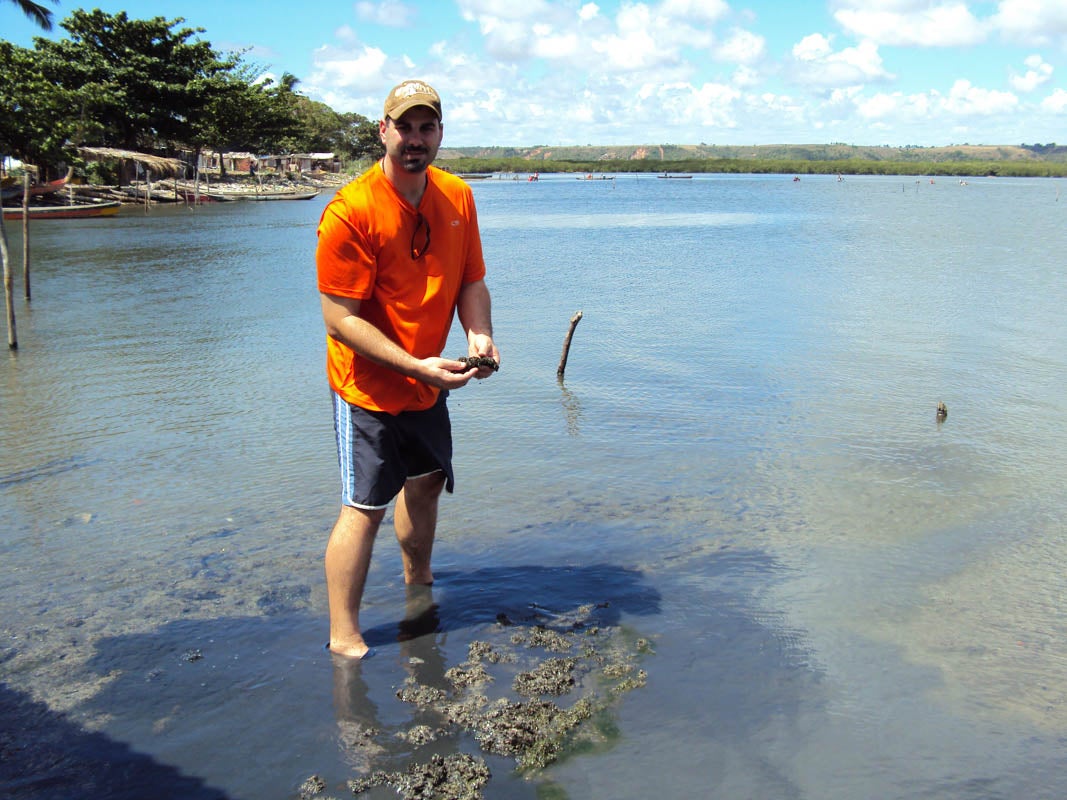
Associate Chair and Professor of Biology Eric Hoffman collects mussels in an estuary in Brazil to understand how this species that is native to Brazil has invaded the Florida coastline.
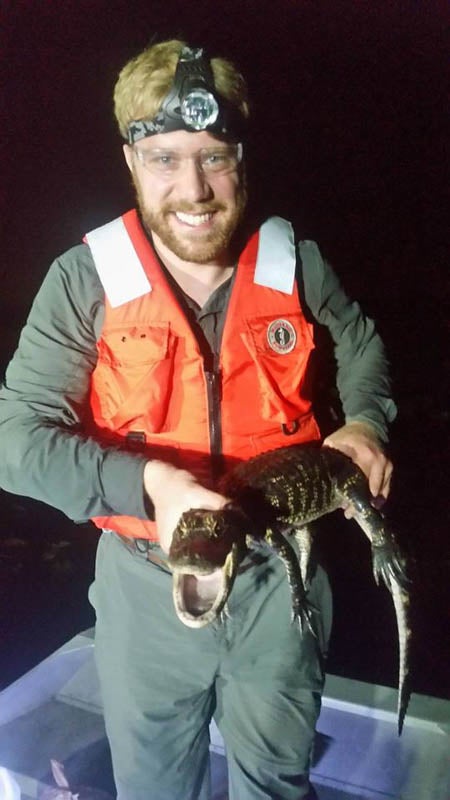
Conservation biology doctoral student John Konvalina collects alligators for his research project on investigating how sea water rise will impact displacement of alligators along the coastline of the southeast United States. This picture is of permitted work in Mississippi from 2019.
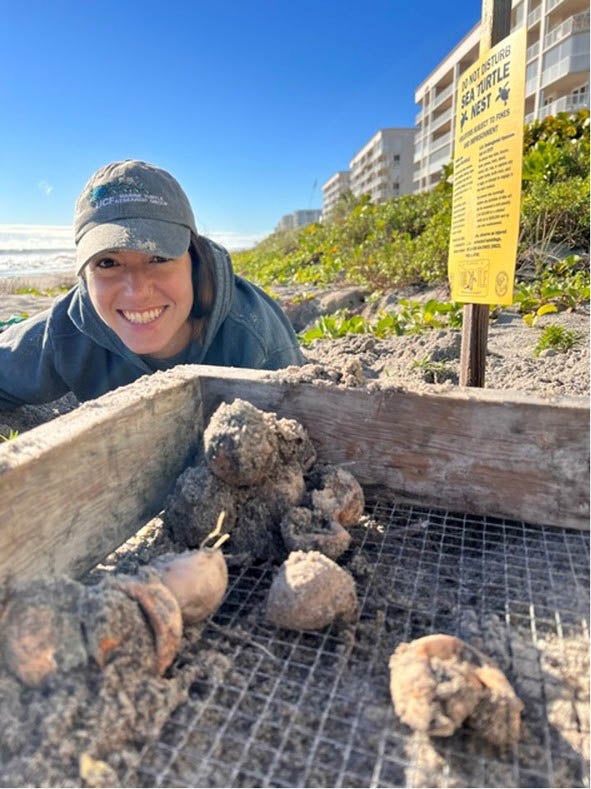
Biology master’s student Merope Moonstone monitors sea turtle (under a permit) along Brevard County beaches.
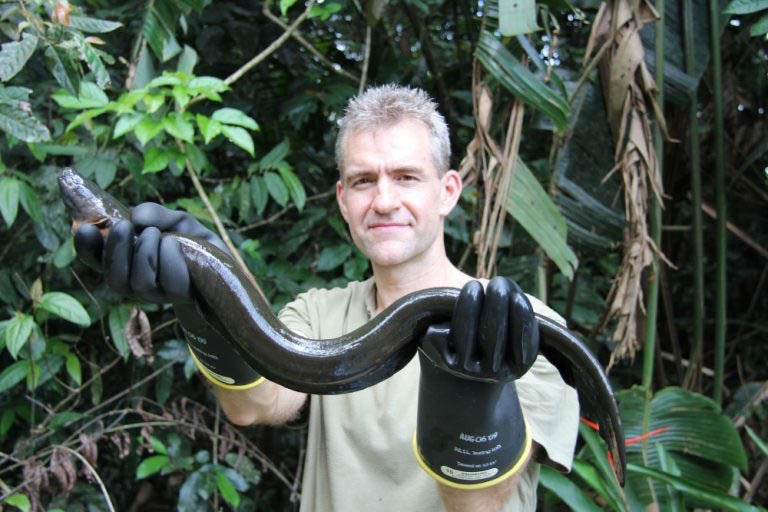
Associate Professor of Biology William Crampton holds an eel after traveling to South America to conduct research into the ecological, behavioral, and evolutionary mechanisms that generate and regulate aquatic species diversity in the tropics.
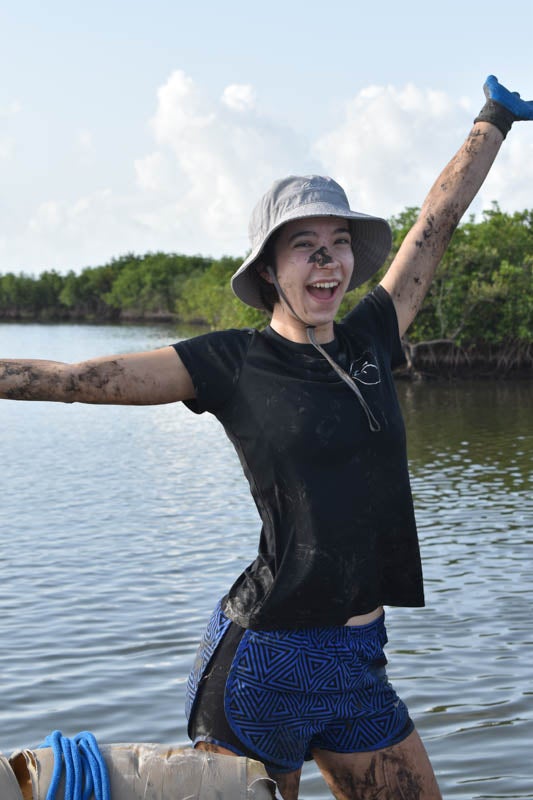
Biology graduate student Katherine Harris merges from underneath mangroves after setting up an experiment on ocean acidification in Mosquito Lagoon on the east coast of Florida.
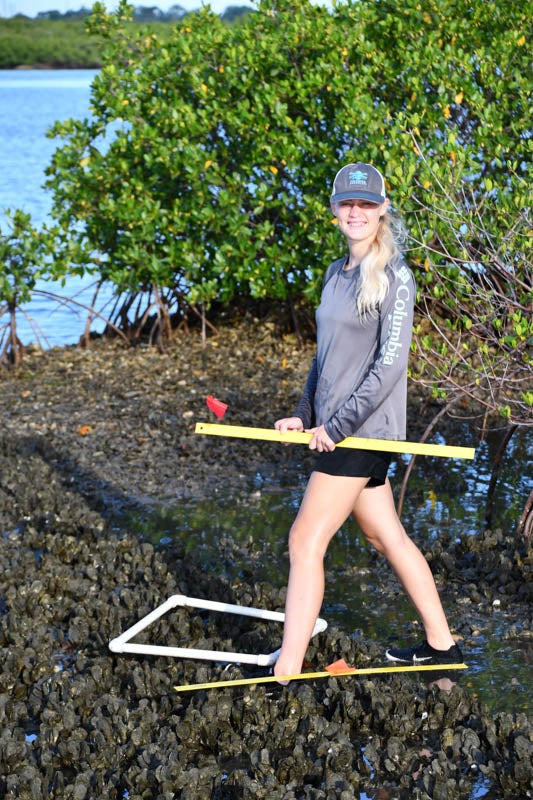
Biology student Sideny Busch monitors oyster reefs in Mosquito Lagoon on the east coast of Florida.
